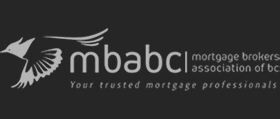Fixed Versus Variable Mortgage Rates – Finding the Right Strategy for You!
Many property buyers and current mortgage holders are faced with a major decision:
Should you choose a fixed or variable rate?
Recent fixed rate increases have made this decision more difficult, as the spread between the two has increased, making the low variable rate a lot more attractive.
As always, I recommend my clients do what’s best for their risk tolerance, as it’s quite difficult to predict what rates will do in the future. Historically, you would have been better off with a variable rate (on average) over the past 50 years. However, it’s important that you can withstand the risk of potential fluctuations, as well rest easy knowing your rate is floating.
The bottom line is: if the uncertainty of a variable rate is going to cause you stress, it’s simply not worth it.
If you are one of those willing to gamble a bit on the rate and you’re okay with the risk it entails, here are two strategies I’d recommend for a variable rate mortgage, to help offset the impending and inevitable rate increases:
1. Variable/Floating rate with Fixed Rate Payments
Currently we can offer a variable rate mortgage as lows as 1.75%, versus a current 5 year fixed rate of around 4.49%. It’s hard to predict with any certainty but I would guess it could take a minimum of at least a year for the variable rate to go a high as 4.50%, and possibly two or three years.
So what I recommend is taking the variable rate but setting the payments based on 4.50%. That way, instead of guaranteeing to pay the bank 4.50% over the next 5 years, you instead pay yourself during that time, as the differential between the floating rate and the 4.50% extra payment will go directly to the principle of your mortgage.
So not only will you pay off the mortgage aggressively ahead of schedule, but you will also offset the risk of future increases by saving on interest. Furthermore, once the rates do increase, there will not be a huge payment shock, as you will have already been paying based on the higher rate.
2. Fixed and Variable Combination
Another good option is to split the mortgage into two components, for example 50% fixed and 50% variable. Using the same rates from the previous example, you would wind up with 50% at 4.49% fixed for 5 years and 50% variable at 1.75%. This would give you an effective rate average of 3.12% on the entire mortgage while only taking on half of the risk.
Please note, this strategy is not available with all lenders or scenarios so please consult with me to see if this option is applicable to your situation.
So to summarize; the variable rate option has been the best way to go historically and that will likely be the case going forward. However, it’s important that you can tolerate the risk and that you implement an appropriate strategy for this option, to ensure you mitigate risk and maximize savings.





